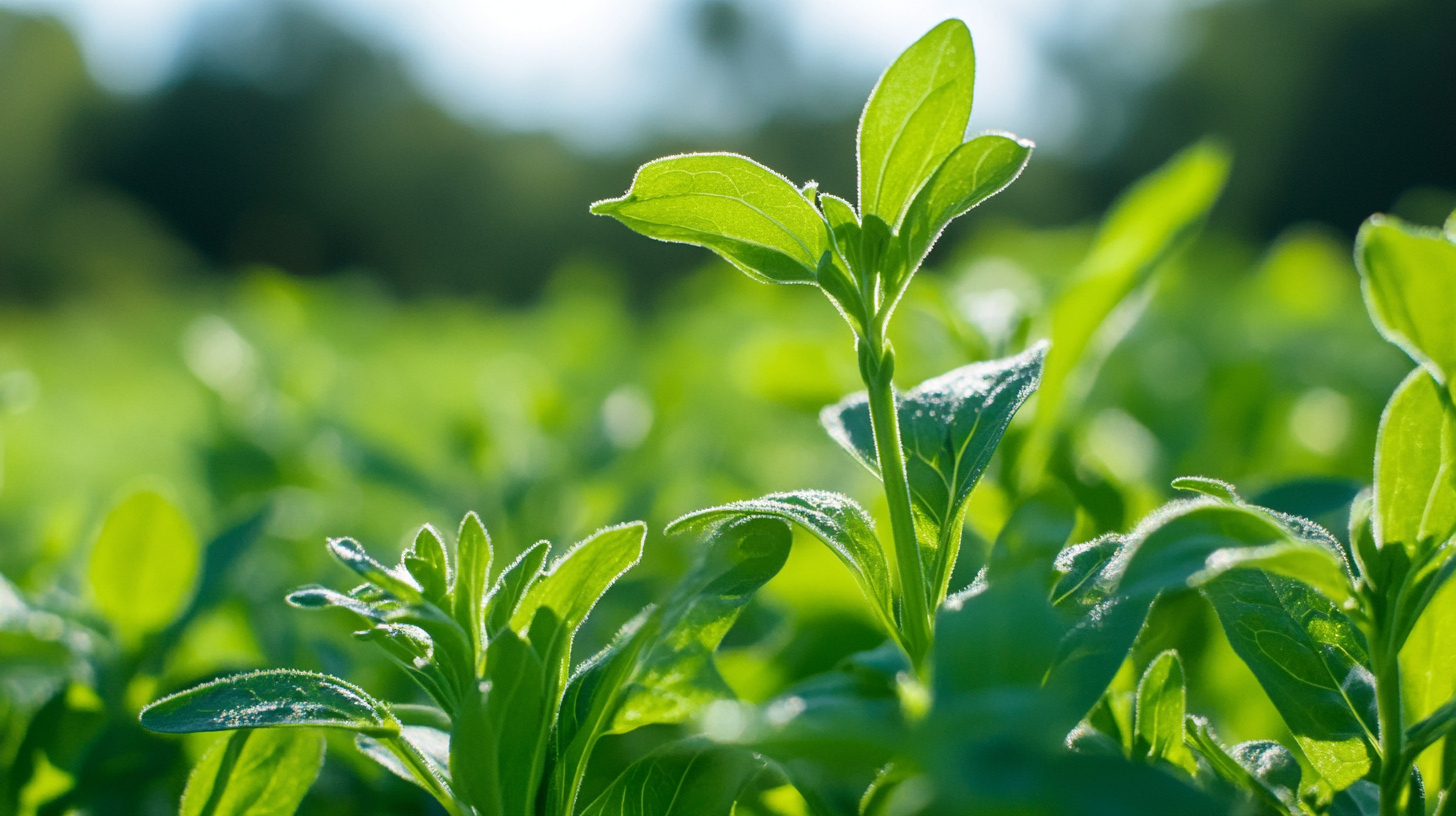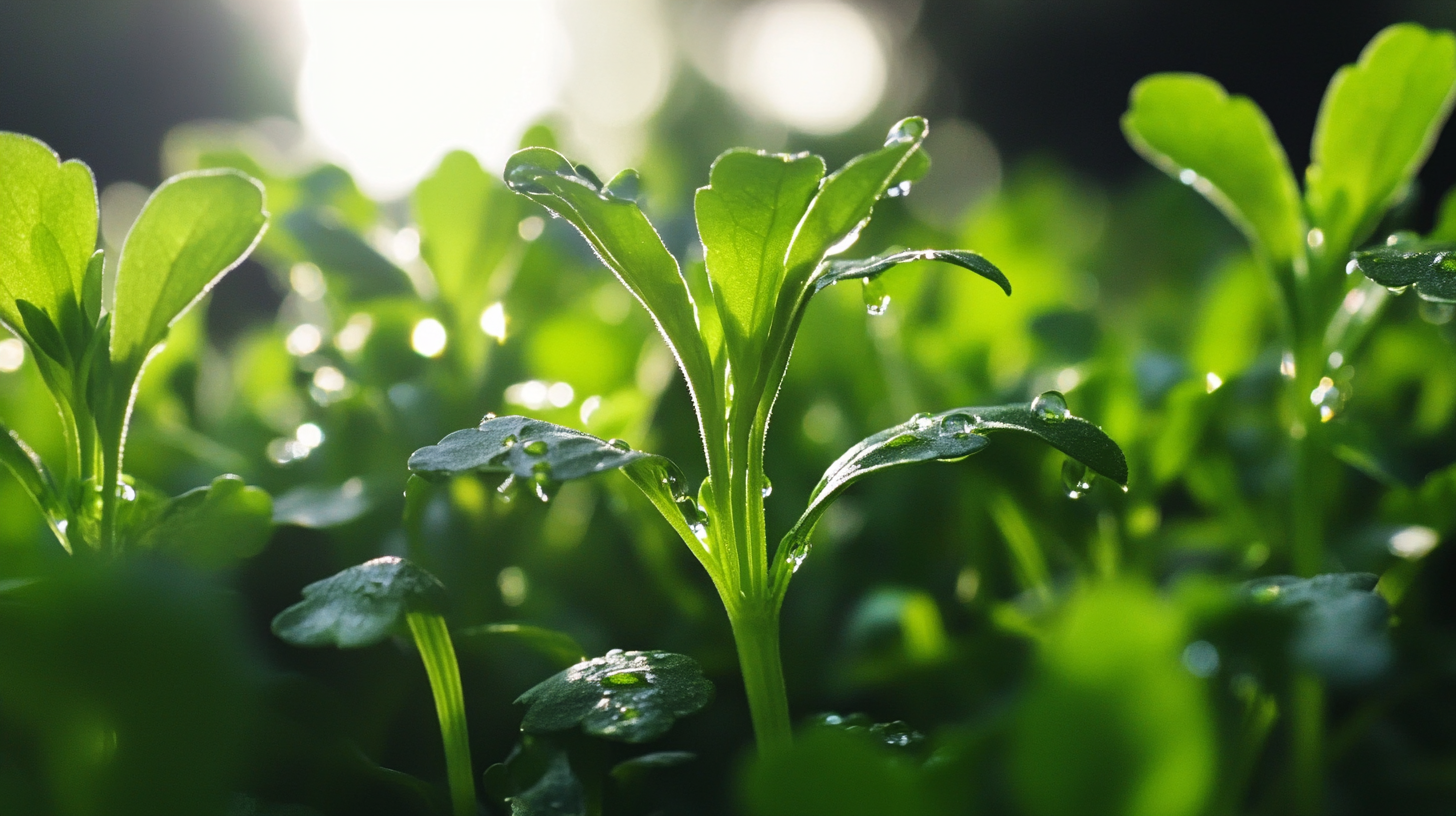Navigating the Quality Standards Challenges in Best Stevia Extract Production
The global demand for natural sweeteners has surged in recent years, with the stevia extract market projected to reach USD 1.73 billion by 2027, growing at a CAGR of 8.3% from 2020 to 2027. As consumers seek healthier alternatives to sugar, stevia extract has emerged as a popular choice due to its zero-calorie content and low glycemic index. However, navigating the quality standards challenges in the production of stevia extract is critical to ensuring product safety, efficacy, and consumer satisfaction. With various international standards and certifications to adhere to, producers must be well-versed in quality control processes and best practices. This blog aims to provide insight into these challenges, offering practical advice on how to achieve optimal quality in stevia extract production while meeting market demands.
Challenges in Achieving World-Class Quality Standards for Stevia Extracts
Navigating the challenges in achieving world-class quality standards for stevia extracts is crucial in a growing market that increasingly prioritizes clean-label products. According to industry reports, the demand for natural sweeteners, particularly stevia, is projected to reach a market value of $700 million by 2025, driven by a consumer shift towards healthier lifestyle choices. However, maintaining consistent quality amidst this rapid growth presents significant hurdles.
Key challenges include variability in raw stevia leaf quality, which can affect extraction processes and final product purity. Research indicates that the composition of steviol glycosides can vary significantly based on region, cultivation practices, and harvesting techniques. This inconsistency can lead to difficulties in meeting both regulatory standards and consumer expectations for taste and sweetness. Moreover, companies must invest in advanced technologies and rigorous quality control measures to ensure their products not only meet but exceed international standards, thereby safeguarding their reputation in the competitive sweetener market.
As the stevia industry continues to mature, adopting best practices in production and quality assurance will be vital for producers aiming to distinguish themselves in a landscape increasingly influenced by consumer demand for transparency and quality.

The Role of Sustainable Practices in the Stevia Production Process
Sustainable practices play a crucial role in the production of high-quality stevia extracts, especially as the demand for natural sweeteners continues to rise. According to recent industry reports, the global stevia market is projected to reach USD 5 billion by 2027, driven by increasing consumer preference for healthier alternatives to sugar. Implementing sustainable agricultural methods not only enhances the quality of the stevia plants but also supports environmental conservation. Techniques such as crop rotation, organic fertilization, and integrated pest management can lead to improved soil health and reduced chemical use, resulting in a purer extract.
**Tip:** Consider integrating organic farming techniques in your stevia cultivation. Utilizing compost and natural pest repellents can significantly lessen your environmental impact while boosting crop resilience.
Moreover, embracing sustainability in the production process can result in economic benefits for farmers and manufacturers alike. A study by the Food and Agriculture Organization (FAO) shows that sustainable practices can increase yield by up to 20% over traditional farming methods, providing a win-win scenario for both quality and profitability. Stakeholders should prioritize eco-labeling and certification, as consumers are increasingly willing to pay a premium for sustainably produced goods.
**Tip:** Explore partnerships with certification bodies to ensure your stevia products meet sustainability standards, attracting a more conscious consumer base.
Navigating the Quality Standards Challenges in Best Stevia Extract Production - The Role of Sustainable Practices in the Stevia Production Process
| Quality Standards |
Challenges Faced |
Sustainable Practices |
Impact on Production |
| Purity Levels |
Variability in crop quality |
Organic farming methods |
Consistent quality of extracts |
| Traceability |
Lack of supply chain transparency |
Blockchain technology |
Enhanced consumer trust |
| Regulatory Compliance |
Evolving legal standards |
Regular audits and certifications |
Avoidance of legal issues |
| Environmental Impact |
Soil degradation |
Crop rotation and cover cropping |
Sustainable soil health |
| Flavor Profile |
Inconsistent taste |
Natural cultivation techniques |
Improved taste consistency |
Technological Innovations Driving Stevia Extract Quality Improvement
 The production of high-quality stevia extract has increasingly relied on technological innovations to meet stringent quality standards. Advances in cultivation techniques, such as precision agriculture and soil health management, are playing a pivotal role in enhancing the quality of stevia leaves. By utilizing data analytics and sensor technology, farmers can monitor soil nutrients and optimize irrigation practices, leading to more robust plants that yield superior extracts.
The production of high-quality stevia extract has increasingly relied on technological innovations to meet stringent quality standards. Advances in cultivation techniques, such as precision agriculture and soil health management, are playing a pivotal role in enhancing the quality of stevia leaves. By utilizing data analytics and sensor technology, farmers can monitor soil nutrients and optimize irrigation practices, leading to more robust plants that yield superior extracts.
In addition to improved agricultural practices, innovative extraction methods are revolutionizing the industry. Techniques such as supercritical CO2 extraction offer higher purity levels and better retention of stevia’s natural flavor profile. These methods minimize the use of solvents and reduce environmental impact, aligning with consumer preferences for clean-label products. Furthermore, the integration of automation and artificial intelligence in processing facilities ensures consistency in quality, driving the industry toward higher standards and greater consumer trust.
Comparative Analysis: Chinese Stevia Extracts vs. Global Market Competitors
The global stevia extract market has witnessed remarkable growth, with projections indicating it will reach $1.5 billion by 2027, expanding at a CAGR of 8.5% from 2022. This surge creates a competitive arena where Chinese stevia extracts are becoming increasingly relevant. Chinese manufacturers dominate the market, producing approximately 70% of the world’s total stevia supply. Their scale and efficiency often outpace those of their international counterparts, yet concerns about quality standards remain a pressing challenge.
When comparing Chinese stevia extracts to those from other regions, it's essential to analyze the purity and regulatory compliance of these products. Several studies, including those from the Food and Drug Administration, reveal that while many Chinese extracts are economically viable, they may not always meet the rigorous quality testing standards adopted by western markets. This discrepancy prompts buyers to scrutinize product certifications more closely, ensuring that the extracts not only taste good but are also safe for consumption.
Tips: When sourcing stevia extracts, look for products that have undergone third-party testing and hold certifications like ISO 9001 or HACCP. This can significantly reduce the risk associated with quality variances. Additionally, consider suppliers that provide transparency about their sourcing and manufacturing processes to ensure you are getting a high-quality product.
Market Trends and Consumer Preferences Shaping Stevia Production in China
The stevia market in China is witnessing significant transformation driven by evolving consumer preferences and market trends. According to a report by Transparency Market Research, the global stevia market is projected to reach USD 1.2 billion by 2027, with Asia Pacific, especially China, being a key player in this growth. This surge is largely attributed to increasing health consciousness among consumers, who are shifting towards natural and low-calorie sweeteners, thereby positioning stevia as a preferred choice.
As manufacturers aim to meet these rising demands, it’s vital to adapt to the stringent quality standards that accompany stevia production. The Chinese market is seeing a demand for high-purity stevia extracts, often exceeding 95%. Companies that can ensure consistent quality while scaling up their production will hold a competitive advantage.
Tips:
Consider investing in advanced extraction technologies to enhance the purity and yield of stevia extracts. Additionally, keep abreast of changing regulations and standards in the industry to ensure compliance and market readiness. Engaging with consumers through education on the benefits of stevia can further solidify brand loyalty in this evolving marketplace.

About Us
Products
Nutraceuticals
Botanical Extracts
Berberis Extract
Ginkgo Biloba Extract
Rutin
Quercetin
Grape Seed Extract
European Bilberry Extract
Broccoli Seed Extract
Fisetin
Ajuga Extract
Resveratrol
Stevia Leaf Extract
Green Tea Extract
Olive Leaf Extract
Epimedium Extract
Rhodiola Rosea Extract
Panax Ginseng Extract
Pomegranate Extract
Garlic Extract
Milk Thistle Extract
Black Pepper Extract
Fruit & Vegetable Juice Powder
Customized Service
News
Blog
Contact Us


 The production of
The production of